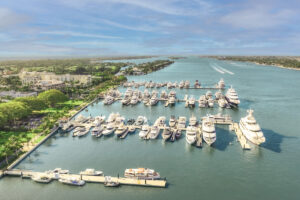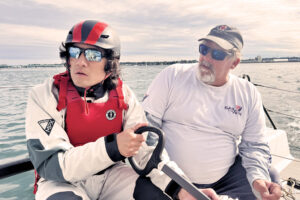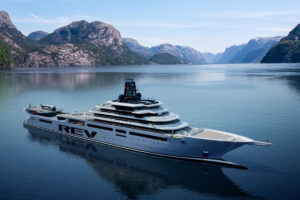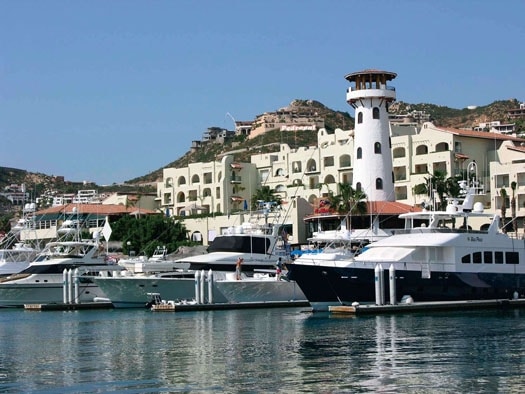
ytgjan09lapaz525.jpg
“The very air here is miraculous, and outlines of reality change with the moment. The sky sucks up the land and disgorges it. A dream hangs over the whole region, a brooding kind of hallucination.” -John Steinbeck, The Log from the Sea of Cortez
I’d visited Cabo San Lucas once before. We were transiting from from Zihuantanejo on the Mexican “mainland,” aboard a Mirage N37. It had taken us 82 hours, and the last 20 were rough as we traversed waters where the Pacific Ocean and the Sea of Cortez collide. Arriving at midnight, we were surely happy to behold the bright lights of Cabo rising on the hillside ahead of us.
But despite some good meals and a superb show by rocker Sammy Hagar at his Cabo Wabo nightclub, our enthusiasm quickly waned. Cabo San Lucas was like an upscale Tijuana for sportfishermen, if you can imagine such a place. Instead of pimps and painted ladies-though there were some of those, too-slick-talking “closers” prowled the city’s venues, hawking villas, condos and time-shares. After four days of waiting for weather at Cabo, we were broke and happy to continue our voyage north along the Pacific coast to Ensenada near the U.S. border.
Cabo has done very well by gringo entrepreneur Bob Bisbee, whose first visit to the area was in 1963, when the population measured in the thousands, not the hundreds of thousands of today. Since then, Bisbee has become world famous for the fishing competitions he organizes. I caught him after the conclusion of Bisbee’s Black and Blue Marlin Tournament, frequently described as the Super Bowl of fishing tourneys. Despite the wealth generated by the development of Cabo San Lucas, he waxed nostalgic for earlier days. “I mean it,” he says. “Nowadays people are slapping down millions like they were hundred-dollar bills.”
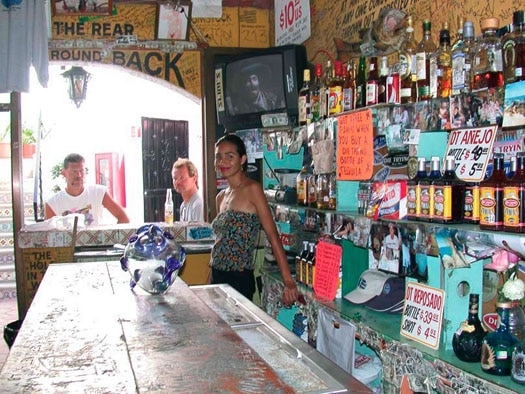
| | |
Both Cabo San Lucas and San Jose are cities in the Mexican district of Los Cabos, and the 18 miles of waterfront between them has been dubbed “The Corridor.” As you run from Cabo San Lucas up the Sea of Cortez, you can see why. One after another, you pass them to port: Cabo del Sol, Hilton Los Cabos, Sheraton Hacienda del Mar, Westin Resort and Spa, to name a few. Green against the desert landscape bloom golf courses by Jack Nicklaus and Robert Trent Jones, Jr.
The late American novelist John Steinbeck wrote a nonfiction account of his 1940 voyage through the Sea of Cortez with a friend and collaborator who was a marine biologist. Published in 1951, The Log from the Sea of Cortez is rich with observations about coastal life in the region on eve of World War II, whose aftermath, of course, transformed Los Cabos into the Baby Boomer playground it is today.
So you might think Steinbeck was prescient when he wrote: “Probably the airplanes will bring week-enders from Los Angeles before long, and the beautiful poor bedraggled old town will bloom with a Floridian ugliness.” You would be wrong on two counts. Steinbeck was actually referring to La Paz, a city farther up the coast that has managed to retain its authenticity. Nor is there anything Floridian or ugly about most construction in the Los Cabos Corridor. The building is exquisite-and expensive. The price of admission: $1 million, minimum.
One Los Cabos project in particular will be a boon to mariners, especially those wishing to avoid the honky-tonk atmosphere of Cabo San Lucas. One of Mexico’s most respected developers, Grupo Questro, is building Puerto Los Cabos, a resort cruising yachtsman community that incorporates an impressive new marina for vessels of up to 180 feet.
Once finished, the marina will be the largest in Mexico with berths for about 400 yachts; its jetties already comprise Mexico’s largest non-governmental breakwater system. The designers looked to the rounded marina basin at Hilton Head, South Carolina, for inspiration. Entering by boat, I found the marina much more impressive than the renderings had suggested. The jetties are massive, capped by boulders weighing as much as 60 tons.
Unlike Hilton Head, there is no candystriped replica lighthouse, but Puerto Los Cabos has its own icon-cum-navigational beacon. Atop the hill behind the marina stands an 80-foot cross sculpture, the symbol of Catholic Spain’s New World conquests. Jim Elfers, an old Baja hand who manages the new marina, took me to the cross and like a general surveying a field of battle, he explained his bosses’ grand plan. Gesturing, he asked me to envision “battleship row,” 150-foot finger-docks for a squadron of megayachts. Over there, he said, would be the 600-foot fuel dock. That land to the right would be for a hotel; over there, a boardwalk. He gave a succinct history of the region and with a sweep of the hand, noted an area of lush foliage that had once beckoned Spanish sailors looking to take on water.
The town itself, founded by missionaries in the 17th century retains the look and feel of its colonial past. Its high-end shops and fine restaurants cater to the growing population of affluent residents, and the overall atmosphere is genteel, as if in rebuke to its immodest sister city to the east.
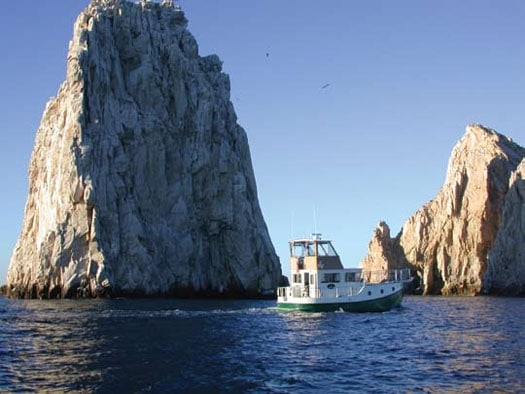
| | |
Underway for La Paz, boats are rarely alone. Dolphins will come to romp in the bow wake-not in ones and twos, not in squads or even platoons, but entire dolphin armies. Hundreds of these leaping, cavorting creatures will surround your boat for hours and seem genuinely pleased that you came. In winter, whale sightings are commonplace, and occasionally a whale shark will lumber by.
At the Giggling Marlin, a rustic palapa restaurant at Bahía de Los Muertos, about 47 miles past Los Frailes, you might stop for a bite. A real estate developer reportedly has bought up much of the waterfront and launched an effort to “rebrand” the bay. The insufficiently uplifting Bay of the Dead now appears on tourist maps as “Bay of Dreams.”No comment.
From Muertos, passagemakers to La Paz take the channel between Isla Cerralvo and the mainland, an often lively body of water because of strong tidal currents and funneling winds. With about 60 miles to cover, most boats will slide into the harbor at La Paz by end of day latest, depending on conditions. California sailors have long made La Paz the staging ground for cruising the Sea of Cortez, and now with new marinas such as Marina Costa Baja, larger yachts are beginning to congregate as well.
My time in La Paz was the most enjoyable of my autumn visit to the lower peninsula. La Paz welcomes foreign travelers without being dominated by a tourist “industry.” Joining groups of gringos and Mexicans, I watched a World Series game from a table in the lounge at Los Arcos, an old Deco hotel on the waterfront. I had no idea that the real sports excitement would happen the following evening.
Somewhere else in Mexico the Chivas were about to face Club America, a soccer rivalry of Sox-Yankee proportions. The malecon was transformed into an enormous pep rally for partisans of each team. Chivas fans packed cars heading slowly north honking horns, waving stuffed goats (chivos) and singing, while in the southbound lane Club America fans honked and hurled insults at the oncoming cars. Energized, pedestrians on the malecon shouted encouragement of their own. This show-a genuine Mexican moment-must have lasted two hours.
I was talking to Eric Leishman of PAE, the builders of Nordhavn trawler yachts, and he, too, sang the praises of La Paz and the nearby islands. He recalled anchoring in the cove formed by the small gap between Partida and Espiritu Santo. “There’s no town at all, just a little fishing camp that the pangas run out of and beautiful cactus,” he says.
Think of La Paz as prelude, Leishman’s cove as a tease. You’ve had your honky-tonk. You’ve seen your authentic Mexican city, too. Now press on, northward into the Sea of Cortez. See Baja as it looked from the poop decks of Spain’s imperial ships. Imagine coming by boat to the Bay of Angels. You are anchored beneath extinct volcanoes on a cool desert night, relaxing on the flying bridge. Stars, brighter than you have ever seen them, carpet the sky. You listen to the whooshing as whales blow and, at the same time, to the yip-yip-yipping of a family of coyotes foraging along the beach. That is Baja beyond La Paz.
| Resources Cabo San Lucas: Marina Cabo San Lucas, +52-624-173-9140; www.igy-cabosanlucas.com Marinas de Baja, +52-624-143-6523; www.marinadebaja.com Puerto Los Cabos: The Marina at Puerto Los Cabos. +52-624-105-6028; www.marinapuertoloscabos.com La Paz: Marina Costa Baja, +52-612-121-6225; www.marinacostabaja.com Marina Palmira Yacht Club, +52-612-123-7000; www.marinapalmira.com |

